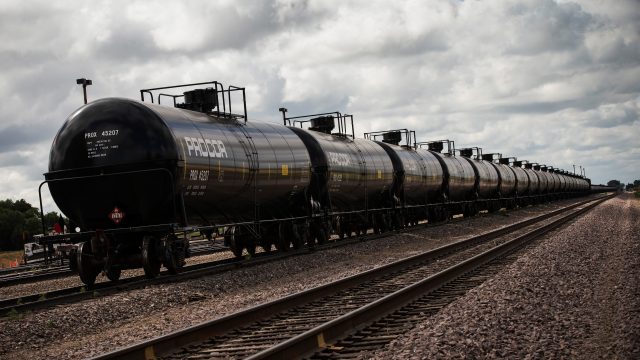Lynn Helms: Cutting Through Confusion And Misinformation About Oil Conditioning

As of April 1, oil producers in North Dakota are required to condition every barrel of Bakken crude oil to improve the safety of transporting the oil by rail.
The North Dakota Industrial Commission unanimously approved the order in December, after months of science-based review and after holding a public hearing and providing for an extended public comment period.
Since the order’s approval, there has been a significant amount of confusion and misinformation about North Dakota’s oil conditioning order and how it compares to oil treatment practices in Texas, the nation’s largest oil producing state.
One falsehood gaining traction holds that oil producers in Texas use a process called “stabilization” to reduce the volatility of crude oil. The fact is that stabilization is a process used not on crude oil, but on natural gas condensate (a low-density mixture of hydrocarbon liquids) from natural gas wells.
[mks_pullquote align=”right” width=”300″ size=”24″ bg_color=”#000000″ txt_color=”#ffffff”]Some of the misunderstanding has been amplified by a few national manufacturers of stabilization equipment who would like to expand their business to include the treatment of crude oil.[/mks_pullquote]
The No. 1 producer in the Eagle Ford shale in Texas has said 70 percent of their liquid production is condensate. Crude oil producers in Texas are treating oil the same way that is now required of oil producers in North Dakota, which is conditioning crude oil by removing the light gases with temperature and pressure.
Some of the misunderstanding has been amplified by a few national manufacturers of stabilization equipment who would like to expand their business to include the treatment of crude oil.
North Dakota’s oil-conditioning order brings every barrel of North Dakota Bakken crude oil within a set standard, requiring oil to be conditioned so that its vapor pressure is no greater than 13.7 pounds per square inch (psi). The order is more stringent than the national standard, which holds that crude oil is stable at a vapor pressure of 14.7 psi.
It’s important for the people of North Dakota to understand that there is no single solution to improving the safety of transporting oil and other flammable products by rail.
Pipelines offer the safest mode of oil shipment, and I encourage the public as well as local, state and federal officials to support the development of critical pipeline projects that can greatly reduce the volume of crude-by-rail transportation. Three large pipeline projects in North Dakota will provide 895,000 barrels of pipeline capacity per day within the next three years.
We also need safer rail tank cars, and we continue to urge the U.S. Pipeline and Hazardous Materials Safety Administration to issue new standards for the construction of safer cars. Other critical elements include continued improvements in railroad operations and track maintenance.
In North Dakota, legislators and state officials also are moving forward with plans to establish a state-run railroad inspection program as well as a pipeline integrity program that would complement federal oversight.
Finally, the state also is assisting a U.S. Department of Energy study to learn more about the volatility of crude oil.
The issues surrounding the treatment of crude oil for safe transport are complex and far from fully addressed here. Moving forward, we will continue to search for ways to make improvements based on sound science.
For a more detailed look at the topics discussed here, visit the Information Center on our website, dmr.nd.gov, for a crude oil conditioning FAQ.




